Marrying Vega and Zen: The AMD Ryzen 5 2400G Review
by Ian Cutress on February 12, 2018 9:00 AM ESTBenchmarking Performance: CPU Legacy Tests
Our legacy tests represent benchmarks that were once at the height of their time. Some of these are industry standard synthetics, and we have data going back over 10 years. All of the data here has been rerun on Windows 10, and we plan to go back several generations of components to see how performance has evolved.
All of our benchmark results can also be found in our benchmark engine, Bench.
3D Particle Movement v1
3DPM is a self-penned benchmark, taking basic 3D movement algorithms used in Brownian Motion simulations and testing them for speed. High floating point performance, MHz and IPC wins in the single thread version, whereas the multithread version has to handle the threads and loves more cores. This is the original version, written in the style of a typical non-computer science student coding up an algorithm for their theoretical problem, and comes without any non-obvious optimizations not already performed by the compiler, such as false sharing.
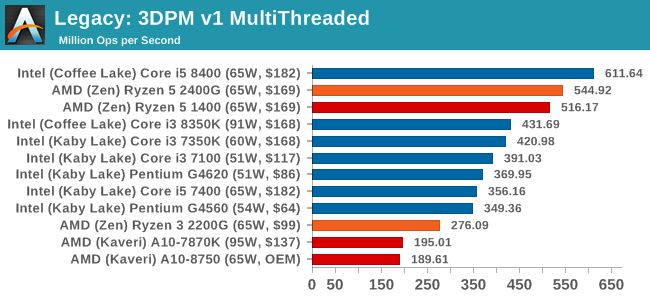
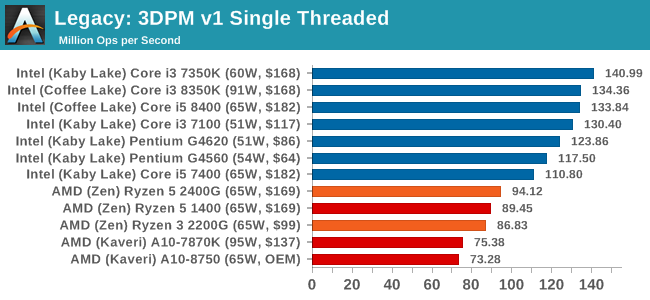
CineBench 11.5 and 10
Cinebench is a widely known benchmarking tool for measuring performance relative to MAXON's animation software Cinema 4D. Cinebench has been optimized over a decade and focuses on purely CPU horsepower, meaning if there is a discrepancy in pure throughput characteristics, Cinebench is likely to show that discrepancy. Arguably other software doesn't make use of all the tools available, so the real world relevance might purely be academic, but given our large database of data for Cinebench it seems difficult to ignore a small five minute test. We run the modern version 15 in this test, as well as the older 11.5 and 10 due to our back data.

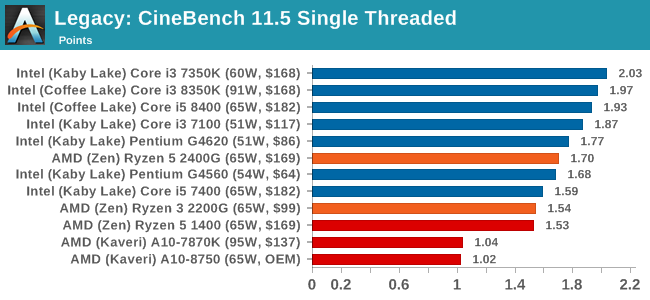
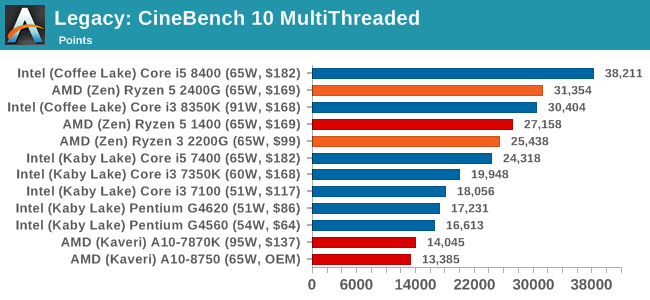
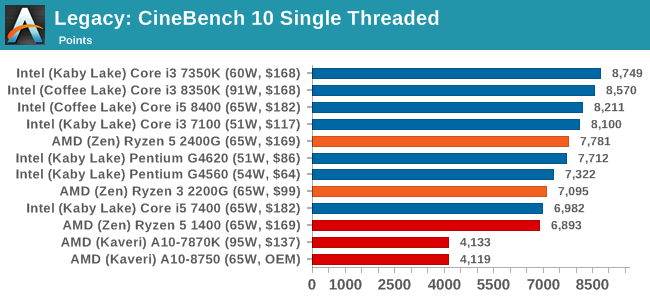
x264 HD 3.0
Similarly, the x264 HD 3.0 package we use here is also kept for historic regressional data. The latest version is 5.0.1, and encodes a 1080p video clip into a high quality x264 file. Version 3.0 only performs the same test on a 720p file, and in most circumstances the software performance hits its limit on high end processors, but still works well for mainstream and low-end. Also, this version only takes a few minutes, whereas the latest can take over 90 minutes to run.
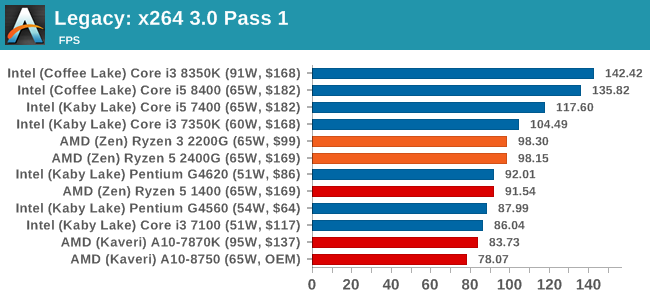
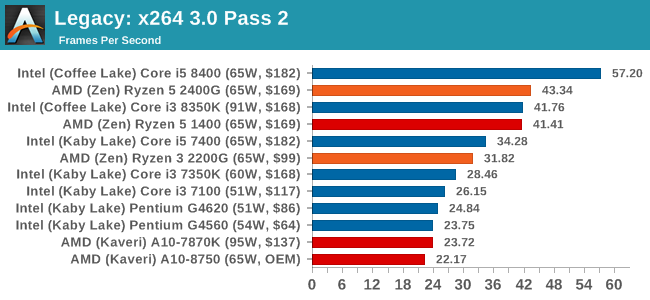










177 Comments
View All Comments
Gonemad - Wednesday, February 14, 2018 - link
These chips will cause a major segment of low-end graphics cards to be buried, or have their prices cut down. I can't wait for the benchmarks, and see how many generations will be affected.callmesissi - Wednesday, February 14, 2018 - link
what an amazing apu... this makes all celerons / pentiums and half of i3 completely out of market! this apu is so good, so cheap, kills all the entry level gpus and basically all those intel cpus mentioned .way to go amd! now about those drivers and bios....
edlee - Thursday, February 15, 2018 - link
this is amazing by AMD, they need to keep the hits coming, and chipping away market share from intel. Intel has not made any progress on processor graphics in years, this is a super aggressive strategy by AMD that i think will work. Nvidia basically has to cancel out any gpu line below gtx 1030 by next year. Hopefully AMD comes out with a GTX 1050 killer by next year.CSMR - Wednesday, February 14, 2018 - link
I think the relevant Intel comparisons would be processors with Iris Pro or Iris Plus.Hixbot - Wednesday, February 14, 2018 - link
Do these APUs not compete directly with the new Intel-Vega chips? Why did AMD give Intel Vega, when AMD could have had the APU market all to themselves?SaturnusDK - Wednesday, February 14, 2018 - link
Not really. The i8809G as it's called is supposedly a mobile part if you can call a 100W TDP part mobile by any stretch of the imagination. It's based on a 22 (or 24) CU Vega and will be much much more expensive. Expect it to land somewhere in the $400+ range, ie. more expensive than an 8700Kfranco1961 - Thursday, February 15, 2018 - link
Hi Ian. Two questions: I have to do a cheap PC for video editing (Adobe Premiere, After Effcets, etc.) and I thought about a Ryzen 3 1200 and a Geforce GT 1030. You think this Ryzen 5 2400G goes for video editing by having a Vega 11? Another question: using DDR4 2400 would I have a strong performance drop or could it be okay? Thank you!rexian96 - Thursday, February 15, 2018 - link
A question for Ian or anyone who knows - Does 2400G not support HW encoding of H264/265 and just limited decoding? Or that Handbrake doesn't support it yet? Looking at the encoding score it would seem 8400 is miles ahead though the GPU in Ryzen is much stronger.csell - Friday, February 16, 2018 - link
Hi. Do you know the max videoram?Will it be possible to use Crossfire between the shared ram and a graphics card?
If crossfire will be limited to VEGA graphics card, will I hope AMD will introduce a cheap graphics card with just 8 or 11 Vega compute units and may be HDMI 2.0
SaturnusDK - Friday, February 16, 2018 - link
There will be no crossfire with dGPUs. It's no possible at all.